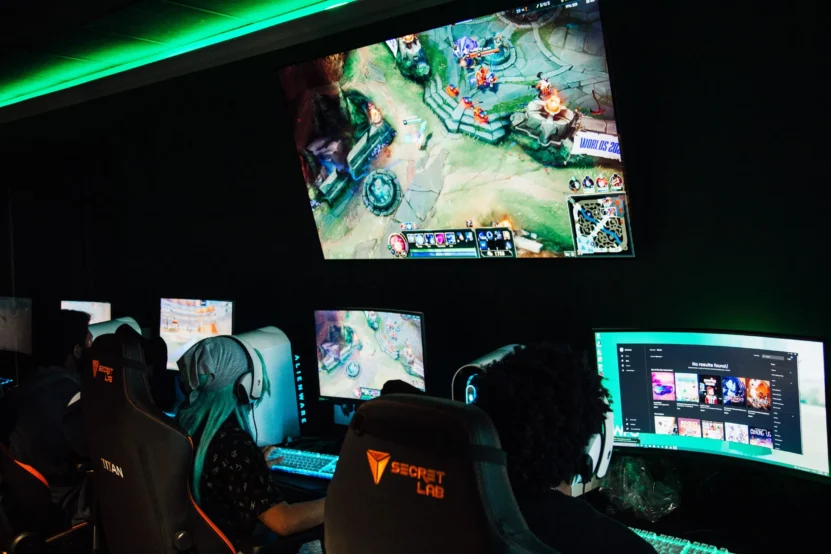Gaming is no longer just a pastime; it’s a phenomenon. Millions, if not billions, are enveloped in this immersive universe, from casual mobile games to graphically intense multiplayer online games. But as with any form of play, there’s a deeper layer that only the most committed or strategic dive into: meta gaming. This concept, while seemingly esoteric, has immense significance in shaping how games are played, experienced, and even designed.
The Foundation of Meta Gaming

Meta gaming can be succinctly defined as the act of using information and strategies from outside the game’s narrative or world to influence in-game decisions. It has roots in the early days of tabletop gaming. When you imagine friends huddled over a game of Dungeons & Dragons, referencing guides or using knowledge from previous campaigns, you’re looking at meta gaming.
Humans are naturally predisposed to strategizing beyond immediate contexts. This cognitive trait, which aided our ancestors in survival, has seamlessly seeped into our recreational activities. As a result, the act of leveraging out-of-game information isn’t just a quirk of gameplay—it’s a reflection of our innate drive to plan, predict, and prevail.
Early Examples of Meta Gaming
Long before video games, meta gaming found its home in classic tabletop games. Dungeons & Dragons players, for example, would often use knowledge from game manuals or previous campaigns to decide their in-game actions. Such decisions could range from avoiding certain known traps to predicting an opponent’s move based on prior knowledge. While purists might argue this breaches game immersion, for many, it added another layer of depth and strategy.
Transition to Video Games
Video games took the torch of meta gaming from tabletop games and ran with it. Early multiplayer games, especially strategy ones, invited players to predict opponent moves based on prior knowledge or shared community strategies. Soon, game forums buzzed with players sharing ‘meta’ strategies, thus birthing the term as we know it and also paving the road for outlets such as Theclashify.
Metagame and Competitive Play

Competitive gaming, with its thrilling arenas and adrenaline-packed sessions, places a huge emphasis on the metagame. In many respects, the metagame becomes a silent player on the team. Popular titles, such as ‘League of Legends‘ or ‘Counter-Strike: Global Offensive’, aren’t just about reacting to what’s visible on screen. Behind the scenes, there’s a constant dance of prediction, adaptation, and mind games. Players observe and evolve their strategies based on what is trending, what’s deemed most effective. It’s an intricate dance, and at this high level, it’s not solely about playing the game; it’s as much about out-thinking the opponent.
The Role of Patch Updates
For the uninitiated, patch updates might seem like routine housekeeping, but they’re much more pivotal. These changes, no matter how small, can upset the established order. Developers, in their pursuit to maintain balance, introduce these tweaks which can shift the metagame dramatically. A strategy that’s been dominant for months might, overnight, lose its potency. This ever-shifting landscape demands that players don’t rest on their laurels. They must constantly adapt, predict changes, and sometimes even exploit the new alterations. It’s a chess match with an ever-changing board, challenging players to stay nimble and innovative.
Metagaming Communities
The complexity and depth of metagaming have led to the rise of tight-knit communities. Virtual spaces, including online forums, YouTube channels, and streaming platforms like Twitch, have become hubs of knowledge exchange. These are places where the nuances of the metagame are dissected, debated, and taught. Newcomers seek guidance while veterans offer mentorship. Strategies are both showcased and critiqued. Players, whether they’re casual enthusiasts or competitive professionals, flock to these spaces, eager to deepen their understanding, absorb novel tactics, and contribute to the ever-evolving conversation around game strategy.
Metagaming in eSports
In the cutthroat realm of eSports, where fame and substantial prize money are on the line, metagaming takes center stage. It’s not just about reflexes and skill; it’s about deep understanding and strategy. Professional eSports teams dedicated countless hours poring over the latest game patches, devising new tactics, and scrutinizing rivals’ gameplay footage. Every tiny detail, every move and counter-move is dissected, all in pursuit of that elusive edge. The depth of their metagame understanding and application often delineates the line between hoisting the championship trophy and bowing out in disappointment.
Positive and Negative Aspects

Metagaming, for all its strategic depth and engagement, is a double-edged sword. On one hand, it sharpens players’ skills, promoting critical thinking, adaptability, and fostering a sense of community. It can transform gameplay into a rich, rewarding experience. However, it also carries risks. An overpowering metagame can corner players into a single strategy, suffocating creativity and making gameplay monotonous. But this landscape isn’t static. The cyclical nature of strategy popularity—where today’s leading tactics might be tomorrow’s old news—often reintroduces freshness and reinvigorates dedicated players.
Meta Gaming and Game Design
When crafting the worlds, challenges, and mechanics of games, developers are constantly juggling numerous considerations—one of the foremost being the metagame. Some developers design with the metagame front and center, encouraging players to dive deep into strategy, to test and challenge the game’s mechanics. They embrace the evolving landscape of player-driven tactics. Conversely, some game designers prefer a more linear approach, focusing on delivering a specific experience, and attempt to insulate it from metagaming’s influence. This tug-of-war, of embracing or resisting metagaming, plays a pivotal role in molding a game’s overall feel, longevity, and player reception.
Crossover with Real-World Skills
Metagaming, while rooted in virtual worlds, offers benefits that spill over into the tangible realm. Players, immersed in the metagame, inadvertently sharpen skills that find applications beyond the screen. Strategic planning, adaptability, and decision-making under ambiguity are just a few. Imagine a business strategist drawing parallels from a game’s metagame or an athlete employing tactics reminiscent of game strategies. The world of metagaming, when looked closely, isn’t isolated. It reverberates, influencing and reflecting facets of real-world strategy, decision-making, and critical thinking.
Conclusion

Meta gaming is the story of how humans interact with systems, push boundaries, and collaborate. From its humble origins in tabletop gaming to its pervasive influence in modern video games, it stands as a testament to our desire for depth, challenge, and community. As you dive back into your favorite game, remember: the metagame is not just a strategy—it’s an evolution of play.
